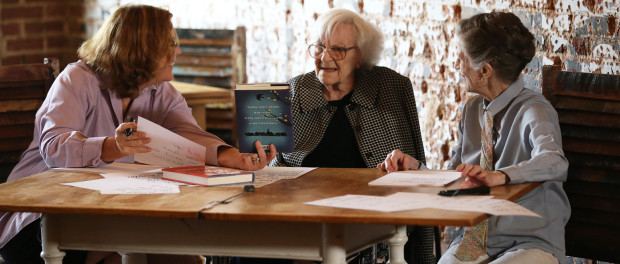Harper Lee: The Famous Recluse
The life of a writer, whose only fiction novel to date is described as the soul of America and has been in print for over five decades, cannot be confined to a ninety-minute documentary. But Harper Lee: From Mockingbird to Watchman is an interesting film about the reclusive writer, who rose to fame in the ’60s after the publication of her first work of fiction To Kill a Mockingbird. While the film only gently tries to mention the mumblings about the critique surrounding To Kill a Mockingbird, I will confine this note only to the analysis of the documentary.
The documentary decides to make the film that was based on the novel as the backdrop of exploring Lee’s life, enough that after a while I thought it was a documentary about the film and not Lee. However, it does try to explore the writer’s journey, influences and some of her closest relationships.
Lee’s journey as a writer began with a generous gift from her friends, whom she frequented in New York. Michael and Joy Brown describe their decision to give all the money Michael got from a gig to Lee, so that she could take a year off from her job as an airlines ticket agent and devote it to writing. They were confident that Lee was only working as a tickets agent temporarily and would eventually do something else. This act of generosity gave Lee the opportunity to work on her novel and give the world her celebrated work.
The film explores the essential influences that had an impact on Lee and her writing. At the core she was a girl from the American South with a passion for its simplicity, and was greatly influenced by her surroundings. The famous character in Mockingbird, Atticus, has great resemblance to her father. The other characters were her friends and people she socialized with.
Lee was also incidentally writing about race relations, a first for a Caucasian writer at that time, just when the US was at the brink of the Civil Rights revolution. It’s all conjecture as to if she was looking to influence the movement at all, for Lee was only writing about her life, her people, and her environment. She was and always remained the Southern girl from Monroeville, Alabama and all the interviews in the film speak to this fact.
Some part of the film is devoted to exploring Lee’s relationship with Truman Capote, the author, journalist, and artist. They were close friends for many years and Lee’s 90-year-old sister Alice Finchley gives us an interesting insight into that relationship. It slowly evolved from being friends, to fellow artists, to collaborators and then to envious competitors, as Capote wasn’t able to enjoy Lee’s success when she won the Pulitzer Prize for her book.
Obviously the backdrop of all this is the recent revelation that Lee had indeed written another book just before Mockingbird, which was sent to a publisher, but never saw the light of day. Lee claims to have forgotten all about it, but last year someone at the publishing house discovered the manuscript from the late ’50s. It was the first work of Nelle Harper Lee, discarded as un-publishable. After Mockingbird, this new novel Go Set a Watchman (meant to be the story after Mockingbird) has a lot to live up to.
The film includes interviews with many contemporary writers and artists who have been influenced by Lee’s work and her life. A lot of people’s thoughts wandered around the truth of this gifted writer having stopped writing (publicly) after just one (now two) works. If she had decided to continue, we would have had a body of work spanning five decades, but from a fellow artist’s perspective, perhaps she had said all that she wanted to say with Mockingbird.
The documentary is available now on DVD.






